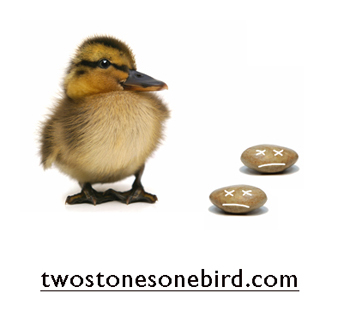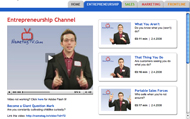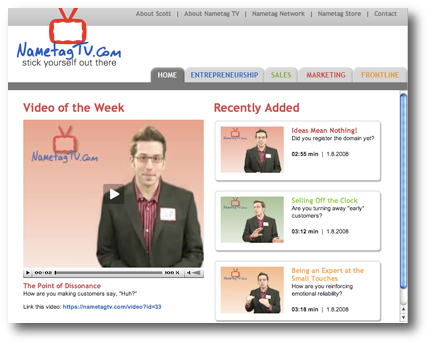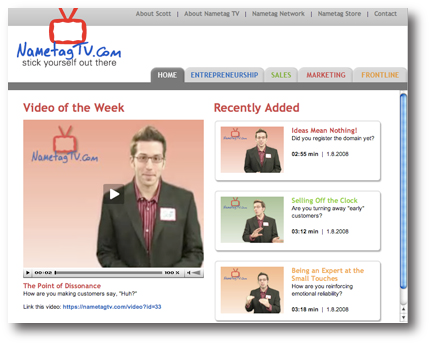 I collect questions.
I collect questions.
At current, my database contains about five thousand of them.
Some I read in books.
Some I overhear in conversations.
Some I just come up with out of thin air.
And, regardless of their origin, the best part about collecting questions is that initial moment when you first come across one that profoundly penetrates you.
Because you’re never the same again.
Questions make us bigger. They’re bridges. They’re fuel. They contain energy. They invite dialogue; enlist introspection and ensue honest appraisals of our personal Truth.
And SOME questions are so powerful, so confrontational and so thought provoking that they actually cause a physical reaction. You might gasp, drop your jaw, nod your head, or even say, “Wow…”
These physical cues are windows into our worlds. They help us pinpoint and excavate what’s REALLY going on inside our heads.
Me? I tend to laugh when I see great questions. Almost as if to say, “Touche, sir. A fair and noble inquiry indeed!”
This happened to me the other day…
I was compiling some notes from a recent NametagTV module when I came across two questions that literally caused me to laugh – out loud. That’s how moving they were.
The first question was:
What are you doing that makes NO sense at all?
I CRACKED up. Absolutely hysterical.
And not because the question was, like, Ha-Ha Funny; but rather that the question made me realize, “Wow, there is so much stupid crap I’m doing in my life right now that makes NO sense at all.”
You gotta love questions like that.
And then, not five minutes later, another question made me laugh out loud:
What consumes your time that isn’t making you any money?
I chuckled to myself in that shifty-eyed, collar loosening, “yikes,” sort of way.
“Wow,” I laughed, “I wonder what daily activities I could ditch because they’re not producing any income?”
Yeah. That is just HILARIOUS…
So, that’s why questions are – in my experience – the most important things in the world. Here’s why:
A question SENDS you off to the races. Stretching your mind into unexpected, unencumbered territory. Challenging your soul to expand and grow and mature. And the BEST part is, once you’ve asked a question, once your mind has danced with that little beauty for a few songs, your mind never quite returns to its original size.
A question FORCES you (and others) to confront yourself. As if to say, “Alright. Cut the shit. Let’s honestly assess what’s going on here. Let’s hold ourselves – and each other – accountable for our actions.
A question FUNCTIONS as that little nudge, push, tipping point or last straw you needed. Helping you to surpass that threshold level of understanding that so desperately tried to hold you back. Helping you meet your own eyes in the mirror and confront yourself.
A question CRACKS open a new world. And all it takes is one. One question – either something you read or hear or write (or even accidentally utter yourself) – that makes you stop dead in your tracks, freeze the moment and say, “Wow. Now THERE’S a good question.”
A question ENLISTS your creativity. It’s impossible to be asked a question and NOT start looking for an answer. The human brain simply can’t resist. The good news is, when your mind is fixated on finding a solution; new ideas and possibilities start coming out of the blue. Almost like the universe KNEW you were looking and granted permission to your unconscious mind to go on a manhunt. Er, question-hunt.
A question can FORGE a path. Asking the right questions is the ONLY way to uproot Truth. Your words are mental machetes that clear the cabbage out of the way. And when I say “cabbage” I mean things like denial and procrastination. Fear and motivation. If you drop the right question at the right time, and you’ll slowly create space to see the entirety of the landscape.
A question VISUALIZES ideal conditions. You inspire people to paint a compelling, detailed picture of the desired future and make meaningful strides toward it. You also empower people to speak FROM the future so they can look back to identify the steps that led there.
A question PREDICTS the future. It lets you imagine the road before you have to travel it, discarding any maps that don’t go where you need to go. You enable people to act as if the desired changed already imagine what they need to become in order for their goals to manifest.
A question can CUT deeply, yet therapeutically. These are the best questions in the world. They almost make you smile, nod your head and say, “OK. Fair enough. Good point.” These are my favorite questions to ask coaching clients.
A question EMPOWERS others to turn inward. Instead of having all the answers, instead of “fixing” people, you ask certain questions to encourage people to tap and trust their inner resources and figure out the answer on their own. Because you’re a midwife, assisting others in giving birth to their own understanding.
A question ENABLES learning. At the root of the word question is the word quest, which means to SEEK, DESIRE and ADVENTURE. So, questions forward the action. All it takes is one and everything can change. Forever.
A question EXPLODES people’s brains. Because it’s not about the answer but what the answer POINTS to. Ask ridiculous questions that stretch people because what they say will represent something bigger, better and brighter.
LET ME ASK YA THIS…
What questions did you ask yourself today?
LET ME SUGGEST THIS…
For the list called, “8 Ways to Out QUESTION Your Competition,” send an email to me, and I’ll send you the list for free!
* * * *
Scott Ginsberg
That Guy with the Nametag
[email protected]
 Nobody talking about your business?
Nobody talking about your business?
Bummer. Perhaps I could help on a more personal, one-on-one basis.
Rent Scott’s Brain today!

 When people start talking ABOUT or get on the topic OF their passion, it’s interesting to note the changes in their communication patterns.
When people start talking ABOUT or get on the topic OF their passion, it’s interesting to note the changes in their communication patterns. What’s YOUR approach?
What’s YOUR approach? So, I have this running list of about 4000 questions.
So, I have this running list of about 4000 questions. If they can’t come UP to you; how will they ever get BEHIND you?
If they can’t come UP to you; how will they ever get BEHIND you? NOTICING … ancillary answers.
NOTICING … ancillary answers. Want to learn more about pumping up your creative prowess?
Want to learn more about pumping up your creative prowess?
 Come to the
Come to the  MYTH #1: Creativity is about making something out of nothing.
MYTH #1: Creativity is about making something out of nothing. Tired of waiting around for new customers?
Tired of waiting around for new customers? Questions are differentiators.
Questions are differentiators. How many unsolicited referrals did YOU get this week?
How many unsolicited referrals did YOU get this week? You probably don’t have the money to hire
You probably don’t have the money to hire  How many unsolicited referrals did YOU get this week?
How many unsolicited referrals did YOU get this week? 

 OK, so, you want to be more creative.
OK, so, you want to be more creative.